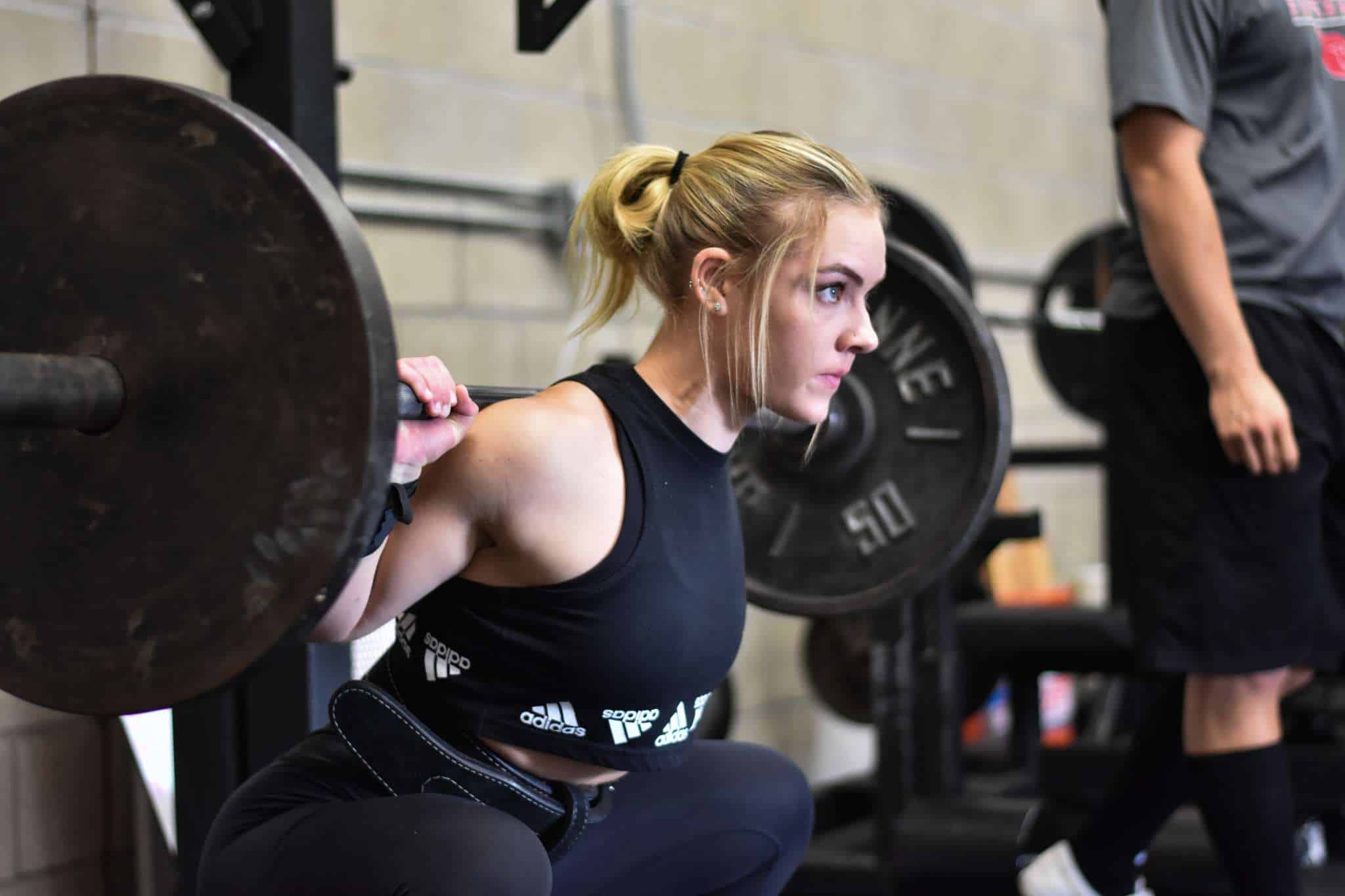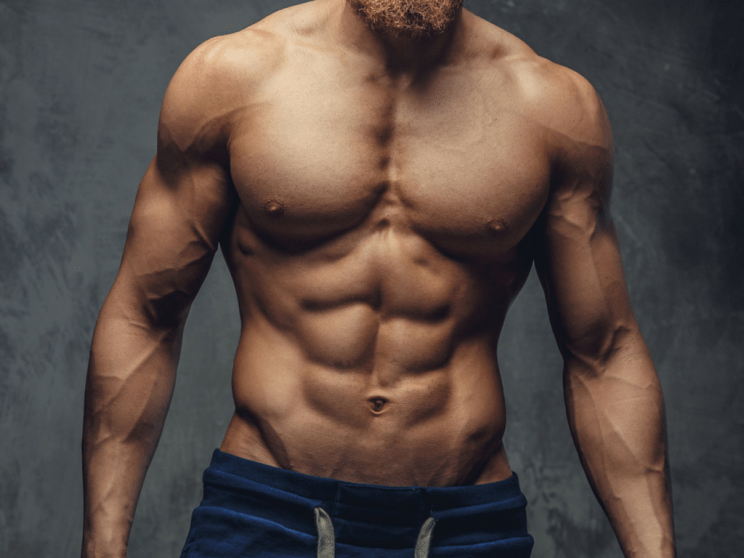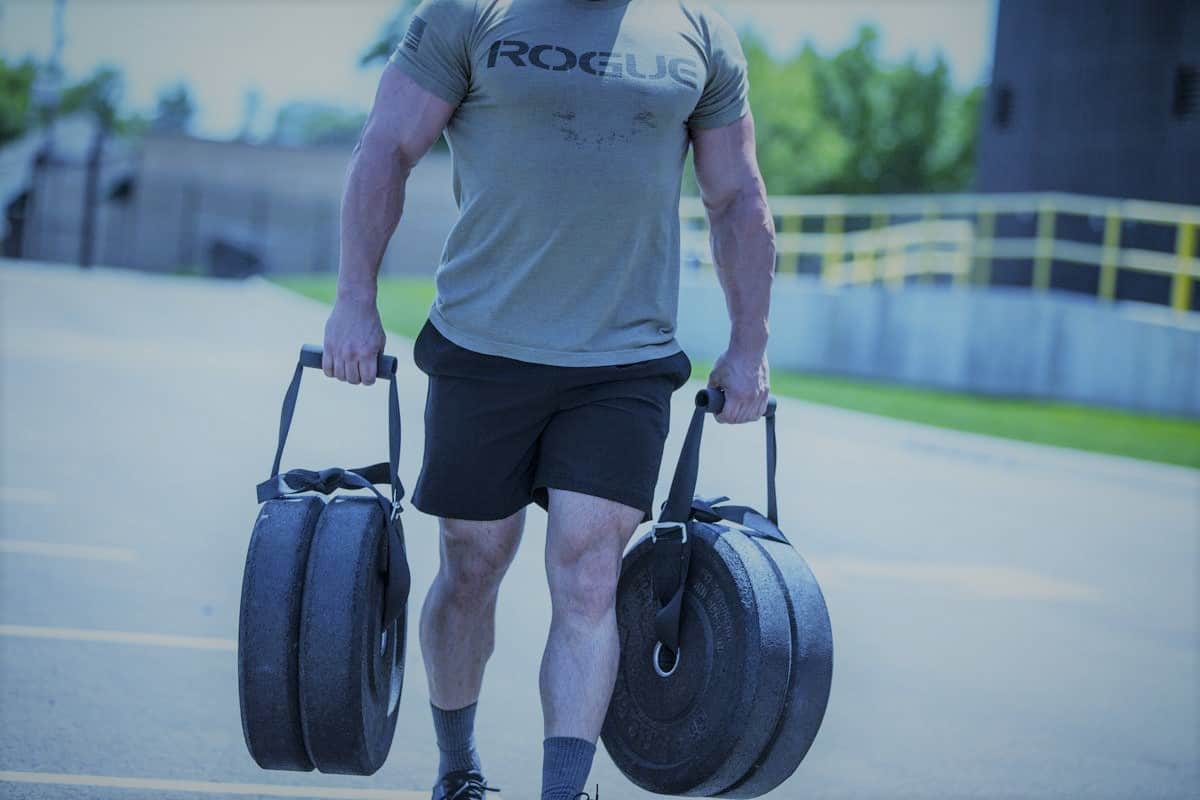The life of a powerlifter does not pay very well. It doesn’t draw in many numbers, there aren’t any major TV productions, and it’s tough to get sponsorships. For many that choose the life of a powerlifter, the only real avenues for making money are content production, coaching, sales from programs and e-books, or day jobs. Few, if any, live off of the earnings they make from the sport itself. As such, the life of a powerlifter generally revolves around a.) lifting weights, and wanting to lift more, b.) financing everything that goes towards that goal, and c.) everything else to keep a lifter sane, like spending time with family, going to the movies, or dating.
Powerlifters are still athletes, and they still spend several hours a day dedicated to their sport (from meal prep and programming to training, stretching, physiotherapy, and more). But unlike many other sports, powerlifters generally have to be their own manager, coach, nutrition expert, hype-man, and financier. If you want to become a powerlifter, understand that this is a growing sport, and you definitely shouldn’t embrace the life of a powerlifter for the money or fame. That may come at some point, but you’re better off going into more lucrative sports if that’s your goal.
However, if you just want to get really, really strong,
either to the best of your abilities, or to compete with the strongest humans
on this planet and stake your own claim, then the life of a powerlifter may be
for you.
Work – being a powerlifter is pricy!
I’d say most powerlifters – even the really strong and
successful ones – spend a majority of their time making money, and not
necessarily with their muscles. Pretty much all the money that can currently be
made in powerlifting comes from content and education; from offering coaching
hours, to writing training programs, providing nutrition plans, selling e-books,
or hosting seminars.
Some of the best and greatest minds in powerlifting that I know, guys like Dave Tate and Greg Nuckols, are known just as much if not more for the wealth of information they put out there for guys like us, as they are for their record-breaking days.
But many other lifters make their money not through powerlifting and powerlifting-adjacent activities, but through day jobs, from practicing law to working in retail. I make my money by writing and producing content for companies that have little to nothing to do with fitness, let alone powerlifting, and when I’ve got the time, I sit down and work on passion projects like this one.
But one way or the other, a lifter’s most important job is the one that gets them the money they need to do what they love most: lift heavy weight.
Food – it’s a balancing act
Some people have the misconception that powerlifters generally eat like bodybuilders that don’t worry about their waistline and body fat percentage, so they cram as much food into themselves as possible and just get on with their lives.
Nutrition is actually a critically important part of being a powerlifter, and when you’re prepping your own meals, cooking them, planning and getting groceries week after week, and eventually sitting down to consume what you’ve prepared, you come to realize that a substantial portion of a powerlifter’s life is spent on food.
We’re not quite as anal about nutrition as bodybuilders are, because we generally can’t even afford to be at 3-5 percent body fat, for even a day. Bodybuilders don’t train and eat to get strong; they train and eat to get big, and then get shredded.
When you’re lifting weights, you want your body to perform optimally towards the task of lifting weights, which means staying at a body fat percentage that helps your body perform at its best. This percentage depends on your gender, age, and so on, but for men, it’s generally around 12%, while for women it’s generally around 20%. Still, the life of a powerlifter also often includes a lot of sweet potatoes and chicken breasts. Or vegan options.
What about the heavy boys and girls?
Yes, yes, we’ve all seen fat powerlifters. Sumo wrestlers are also really strong. Yes, yes, I know that strongmen like Eddie Hall and Brian Shaw and Hafthor Bjornsson are not exactly known for keeping things trim (although if you look closely, they’re leaner than you’d think). Nevertheless, I stand by what I say: there’s no need to be fat when you’re lifting weights, and being at a certain body fat percentage is actually going to hurt you, especially in terms of muscle production (if you haven’t reached your peak muscle mass yet, which is probably the case for a lot of us).
One can make the case that getting fat after you’ve
become as unbelievably yoked as you could possibly get is of a certain benefit,
because mass
moves mass, and people like Ray Williams and Eddie Hall can’t move the
superhuman, mindboggling weights they’ve moved without putting on a significant
amount of extra heft.
But because I’m going to assume most readers aren’t at the
peak of their muscular potential, I’ll refer you to an excellent article
arguing why being above
20% fat as a man and 30% fat as a woman is going to hurt your athletic
potential as a powerlifter, and why 15% and 25% respectively are good,
realistic, and manageable goals that combine strength and aesthetics. Not to
mention the fact that being lighter often means living longer and keeping
stress off your joints (you need those to lift weights!). Remember, fat doesn’t
move metal. Muscle moves metal.
More than just GOMAD and 1000 calorie surpluses
With that said, I can move onto why food is so critically important, and becomes a balancing act: because as a powerlifter, you want to eat enough calories to either grow muscle or maintain your weight, without getting too fat, while getting in a lot of protein and every single one of your micronutrients (the stuff we often ignore, like vitamins and minerals). Supplements help plug gaps, but I’d say about 95-100% of what you need in a day should be in the food you’re eating.
That means picking and choosing ingredients and recipes
based not only on stuff like flavor, but your macros, micros, and caloric
needs. Food is even more important when you’re cutting, because you can’t just
skip breakfast and call it a day. You’ll want to continue to get as much of
your daily protein and micronutrient needs in as possible, while staying at a
constant 300-500 calorie deficit, often for several weeks.
This can get extremely draining, especially with hard
training, so planning ahead and learning to eat when you need to eat and
what you need to eat rather than when you want to eat and what your want
to eat, is important. This also circles back to work, because you’ll need to
finance all the food and supplements you’re taking. So, a lot in the life of a
powerlifter revolves around what, when, and why we eat.
Training – not as important as you’d think
Finally, training. You’d think this would be a bigger part of the article, but truthfully, it really isn’t. If we look at the total time spent on powerlifting endeavors in any given week, I’d say most serious powerlifters don’t spend more than about 20-30 hours a week training. That’s around the same time other athletes spend training for their sport.
At least about 50 hours in any week are spent sleeping, another 40-80 hours are spent working, and much of the rest of our time is spent doing everything else we need to do that isn’t dedicated to lifting and making money, like taking care of the kids, continuing your education, getting your groceries, spending a few hours a week with some friends or going out on a date, spending maybe 5-10 hours a week on your hobbies and interests, and so on.
To circle back to training, that means only about one-eighth of your week is spent on training. And that’s if we consider 20 hours a week to be the norm for ‘powerlifters’. You can be a powerlifter within a federation and even get sponsorships with 10-15 hours in the gym a week.
You don’t need to spend too much time training
This is because the body really doesn’t need an extreme
amount of training stimulus, and technique training isn’t as overwhelmingly
important in powerlifting as it is in other sports. You don’t have to hit the
gym and field two to three times a day, doing drills, or sparring with
partners. Powerlifters do train their technique, but the sport itself isn’t
very complex. As a powerlifter, you don’t go and squat two to three times a
week, and then add in a couple more light-weight squat sessions just to work on
technique.
Unless you’re working only on your squat, at which point
you’re going to cut into the training time you would usually allot to your
other lifts, and you still won’t double your training time just to squat more.
This is because you begin to very quickly reach negative returns if you don’t
give your body enough time to recover between sessions, and if you’re just
training the motion without weight, you’re effectively wasting your time
because the sport is about the weight – even ‘speed squats’ will be
trained with no less than 30% of a person’s training max, and often more than
50%.
Warmups, mobilization, and conditioning are all part of a powerlifter’s training regimen. As are rest periods. When you’re training three hours a day, I mean that you hit the gym at 17:00 and leave at 20:00. Even if less than half that time was technically spent on working sets in any of the big three, the entire process is training.
Recovery – often ignored by newcomers
Recovery is all-encompassing, and by far the most
important part of a powerlifter’s life. Forget the money, the training, the
food – absolutely none of that matters if you aren’t recovering properly. And
there’s a lot to recovery. To me, recovery encompasses:
Sleep.
By far the most important thing. Even a minimal sleep deficit can imperceivably affect your judgment and performance. The most insidious thing about sleepiness is that it isn’t apparent to us until we’re really tired – many rate their performance as just as good when fully rested versus missing an hour of sleep, despite showing clear cognitive and coordinative deficits. This translates into your lifts as well, and is doubly important for muscle repair and growth, as well as the endocrine system.
Active recovery.
That means staying a little active when not training. Too many of us spend our time either at the gym or at a desk. We need to get limber and keep important muscles engaged throughout our day, even if that just means getting up and out of your chair and doing a couple of hip circles and wrist stretches.
More importantly, active recovery needs to be used proactively. If you’re training most days a week but you’ve got a day or two where you don’t go to the gym, consider changing that habit – not to train, but to address all the things you haven’t been doing, like 1-2 hours of steady-state cardio, basic mobility, long stretching sessions, and more. These are things that either a.) reduce your ability to exert force if done before lifting (like stretching), or b.) are too time-consuming to include in a workout that’s already stretching across several hours.
Physical therapy.
Not everyone needs this. But when you’re breaking records or
aiming to, you want a physio guy on speed dial. Your body can’t perform at its
best week after week. Most of us can feel it when stuff is off, and we might
even know when we’re getting close to an injury. The big guys can’t afford to
let something like that derail them, so they need professionals to monitor how they’re
beating themselves up and prescribe the appropriate prehab and rehab movements
to avoid injury or speed up recovery. If you can’t afford to visit a PT often,
just schedule regular soft tissue manipulation (massages), every month or every
two weeks.
Managing fatigue.
Aside from sleep and time off from the gym, fatigue management is an important part in the life of a powerlifter, because it’s basically the art of tracking how much more beat up you feel week after week and then scheduling appropriate deloads. If you know how to program, then you’d know that the body responds best if you taper your training in accordance with a meet – building up to a peaking phase before a meet, then taking a break, and reintroducing training into your weekly routine.
You can choose whether to go through different mesocycles based on hypertrophy and strength, or whether to just completely dedicate yourself to one or the other (this is mostly based on your training philosophy, as there isn’t enough hard evidence to swing things in favor of one or the other), but every good program has fatigue management. This might translate into a deload week, or just a week of active recovery, or even a whole week off the gym entirely (not really recommended, unless it’s to reward yourself for a good meet performance). Otherwise, your body will automatically force fatigue management (get you sick, cause an injury, stalling/plateaus, chronic pain).
Managing stress.
Stress is a part of life, and the central driver of growth – whether it is muscle growth, personal growth, whatever. But too much will mess you up. And when we’re talking about mental stress, too much will cause your performance to suffer. That means powerlifters need to learn to chill, compartmentalize, and deal with their non-powerlifting problems effectively and quickly – if they want to do well in their sport, that is.
After a while, you get pretty good at cutting out all the things in life that get you mad when you’re at the gym – sure, some of those things can help you feed the inner rage monster that helps you power through a new PR, but for the most part, compartmentalizing things that affect your mood negatively is important to avoiding performance drops.
That being said, you can’t keep those things out of your mind forever. You need to address them, and the real key to managing stress is seeking support. Your family and loved ones need to understand that if you want to seriously pursue lifting, they need to help you focus on that. The life of a powerlifter isn’t lived alone – no man or woman is an island. We’re all in this with our loved ones and friends.
That can mean giving you a few weeks to dedicate yourself more fully to your personal goal or helping you find a good therapist, or just being there for you when things get to become too much.
In Conclusion
The life of a powerlifter is a lot like any other athlete’s
life, but with an absolute focus on maximizing strength by pursuing quality
training sessions, staying at a certain body composition ideally all year
round, and making sure to do all the boring stuff that keeps us healthy and
uninjured.
Want to lift heavier and avoid injuries? 💪🔥
Download our FREE '5-Minute Warm-Up Routine for Maximum Lifting Performance' and get primed for every workout!
Click below to grab your copy now!👇
👉 Download the Free Guide




